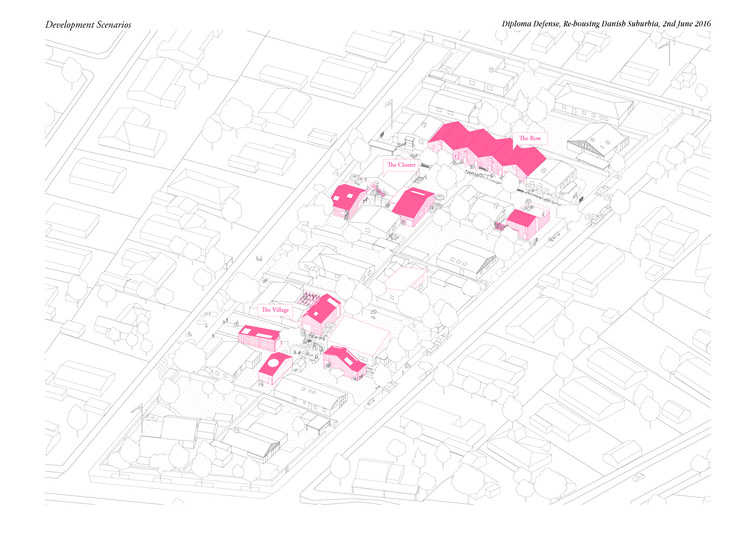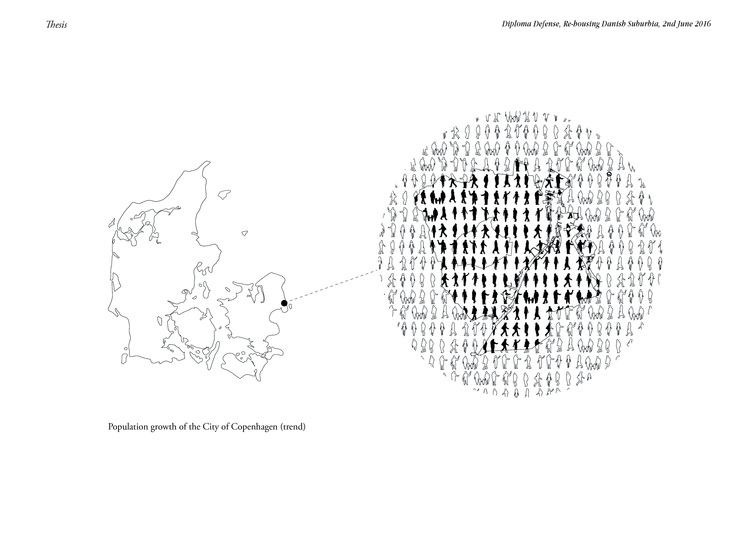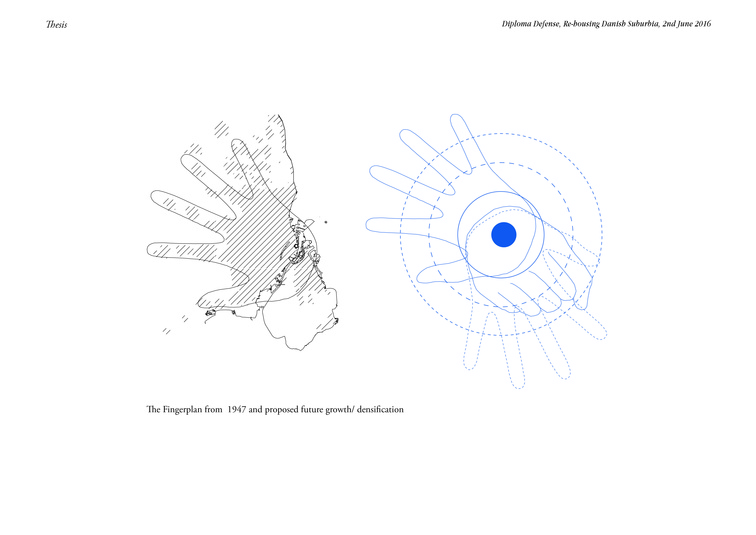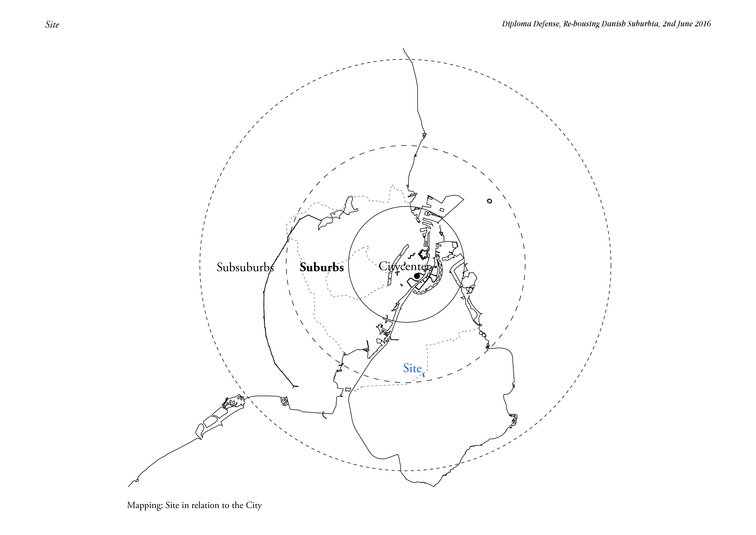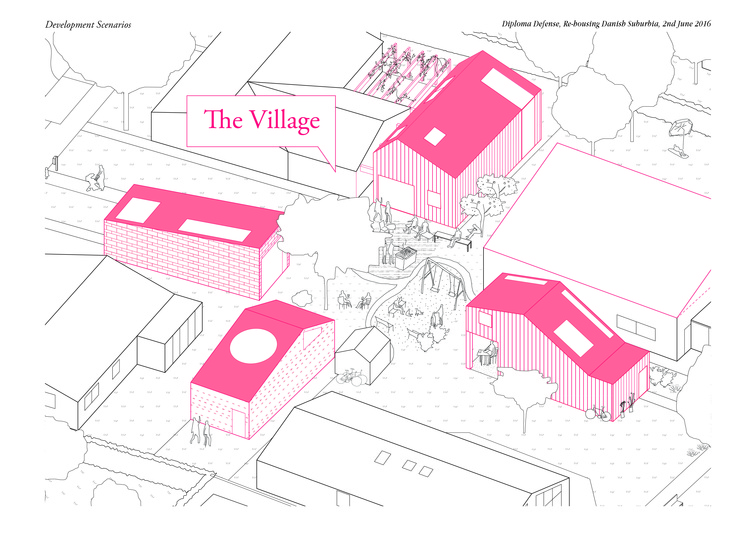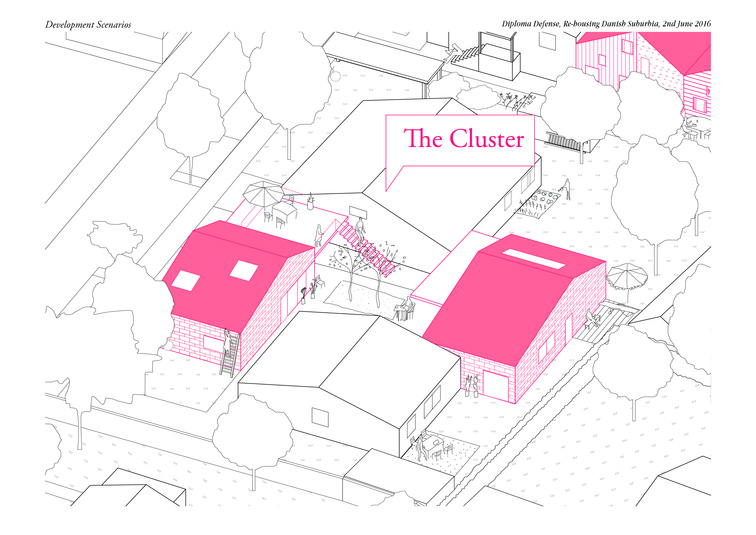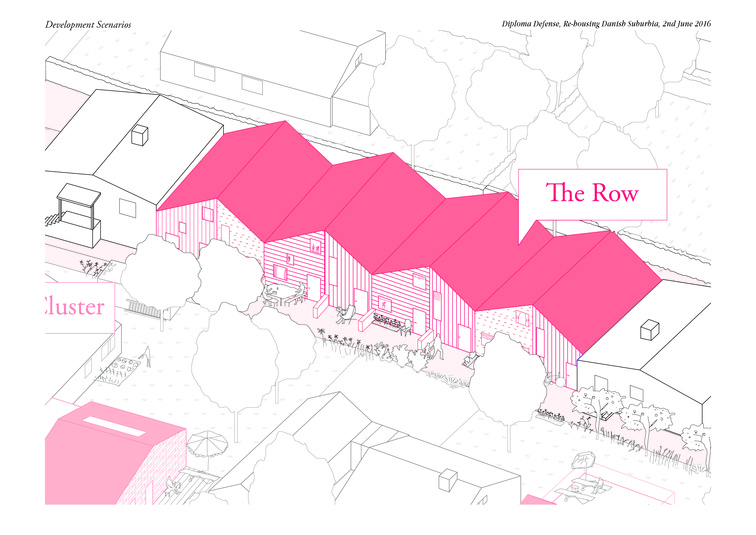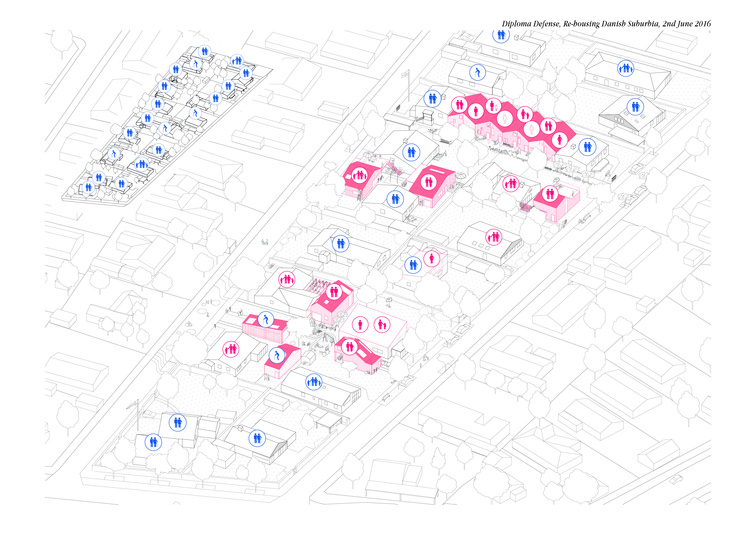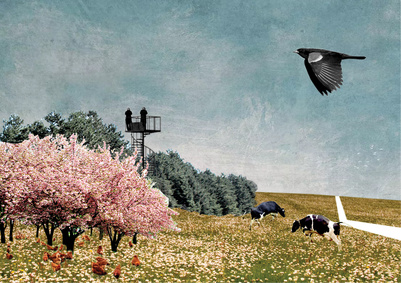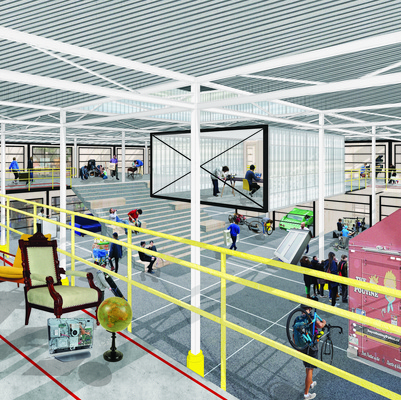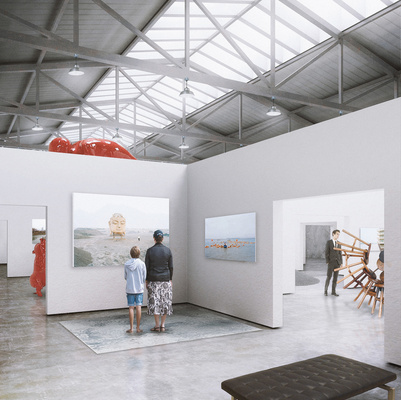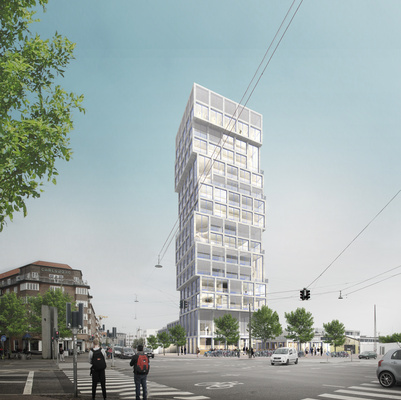Re-housing Danish Suburbia- future living in the suburbs
The present housing stock in Copenhagen and the offered ways of living are not balancing today’s demands. The rapid growth and the slow recovery in the building construction field after the financial crisis leaves us today with an insufficient housing supply. Family and home living of the future is challenged by diverse, even conflicting trends and are not fulfilling the demands. Moreover, homeownership has become - due to the economic risk and high housing prices - more difficult to obtain for lower income groups, including young Danish adults at the age of 30-39 in the period of family forming.
Rehousing Danish Suburbia links the imminent demographic shift of many ageing suburban neighborhoods and the declining number of young adults able to obtain homeownership.
As a strategic design project, a suburban block in Tårnby gets restructured through the modification of the most relevant local building rules. As a result, privately driven development (owners) would emerge a range of different housing typologies, including small, affordable parcels for young couples, singles and elderly people.
The project’s vision is suburbia 2.0. Proposing new kinds of spatial qualities, balancing the need for densification and the original suburban qualities as living with nature, homeownership and privacy within the existing context. Creating a new way of more communal, shared, multi-generational living in Denmark’s suburbs.
